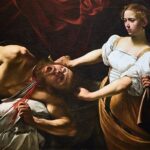
Many great thinkers throughout history tried to explore and explain what makes a literary text superior to others. Some of the most prominent thinkers, each one in his own unique way, attempted to create some sort of set of rules or formula in order to identify those rare and exceptional qualities that extraordinary texts hold – qualities that make a text tremendously influential, powerful and moving to readers.
The most common term that famous thinkers used to refer to said literary texts and their ensuing monumental effect is “the Sublime.” This essay will present four different renowned thinkers from different periods in history who sought to describe what exactly the Sublime is.
During the 1st or 3rd century, the Roman thinker Longinus wrote a treatise dedicated solely to the study of the Sublime, which he creatively named On The Sublime. At the beginning of the treatise, Longinus ascribes to the Sublime such “loftiness and excellence of language” that not only can “convince the reason of the reader” but also can take him “out of himself”; furthermore, he claims that although people can choose if to believe something, the Sublime “sways every reader whether he will or no” (Book I). By this grand introduction, Longinus almost immediately insinuates how he approaches the Sublime with divine respect reserved only for the Gods.
Thereafter, Longinus explains whether he believes the Sublime is an art that writers can learn or not, and he determines that “a writer can only learn from art when he is to abandon himself to the direction of his genius” (Book II); meaning, there must be some inherent genius in a writer for him to learn it. Longinus continues by expressing what he deems as the oppositions of the Sublime with a plethora of examples: “tasteless grandiloquence,” “bombast,” “ill-timed and empty display of emotion,” and “frigidity” (Books III-IV).
After he defines what the Sublime is not, Longinus very briefly elaborates on what he perceives the Sublime is with two obscure attributes: the Sublime “takes a strong and lasting hold on the memory” and consists of words that “always please and please all readers” (Book VII). The literary value of Longinus’ Sublime probably derives more from his description of the vices that presumptuous literary texts incorporate and thus take it away from true sublimity rather than an actual explicit definition of what the Sublime is. Yet, this is perhaps what also makes the Sublime so marvelous to Longinus – its inexplicable, unfathomable, mystifying, Gods-like divinity.
One of the most famous epic poems in history, considered by many as one of the greatest masterpieces ever written, is The Divine Comedy by Dante Alighieri. In an epistle to Lord Can Grande della Scala at the beginning of the 14th century and also in The Banquet, Dante tries to explain what makes his work such a “sublime cantica” (Epistle X, paragraph 10). To achieve his purpose, Dante brazenly and quite bravely compares his work to the holiest texts during an extremely religious period – the New Testament and the Old Testament (the Bible).
Dante lists several vital layers of meaning of a Sublime text, which both The Divine Comedy and The Holy Scriptures contain: literal, allegorical, moral and anagogical. To illustrate what each layer means, Dante analyzes the verse from the Bible portraying how the children of Israel leave Egypt (paragraph 20): he explains that literally, it simply means that the Jewish people were leaving Egypt; allegorically, it signifies the “redemption through Christ”; morally, it means “the conversion of the soul … to a state of grace”; and anagogically, it means “the passing of the sanctified soul … to the liberty of everlasting glory.” Dante’s comparison of his work to the Holy Scripture is certainly bold and perhaps even arrogant, but he also innovatively categorizes the features of the Sublime. Unlike Longinus, who defines the Sublime quite vaguely, Dante already gives actual literary tools to readers with which they can diagnose such superb works.
Immanuel Kant was a modern German philosopher who lived in the 18th century and who also ventured to scrutinize and portray the Sublime. As a distinguished modernist dedicating his studies to human nature and reason, Kant endeavored to define the Sublime and its effects purely from a cognitive perspective, completely detached from religion and God; by that objective alone, he was already very different from both Longinus and Dante, who were influenced by religion intrinsically.
In his work, The Critique of Judgment, Kant delves into the analytical depth of the Sublime by contrasting it with the Beautiful. Kant claims that while the Beautiful has a connection with an object “which consists in having boundaries,” the Sublime is “found in a formless object”; whereas the Beautiful is associated with the “concept of Understanding,” the Sublime is “like concept of Reason” (Second Book, 23). Thus, Kant sets his main discussion on the Sublime as a psychological process of mental cognition of the individual.
Kant divides the individual’s experience of the Sublime into two: the “mathematically Sublime” and the “dynamically Sublime.” The mathematically Sublime is the result of a cognitive judgment that is based on reason one experiences but cannot fathom its magnitude, and therefore the Sublime cannot be found “in the things of nature, but only in our Ideas” (25). Kant hones this definition by stating, “the sublime is that in comparison with which everything else is small” (italics in original) – although one tries to perceive the magnitude of an object with reason, it is greater than everything else in his/her apprehension. On the other hand, the sensation of the dynamically Sublime is experienced when facing an object that is “exciting fear” during the first stage and, consequently, in the second, feeling “pleasurableness arising from the cessation of [this] uneasiness” (28).

Hence, the dynamically Sublime is initially the subject’s fear of the “almightiness of nature,” and ultimately the joy due to the “deliverance from danger.” Through both these definitions, Kant exhaustively explains the subject’s psychological experience and thus meticulously illuminates this facet of literary research of the Sublime much more than before – for instance, as Longinus attempted to describe.
As one of the leading poets of the Romantic period in the 18th and the 19th centuries, Samuel Taylor Coleridge believed that poets should rely on their own genius and individual mind when they express themselves, rather than base their creations on past models or conventional authoritative structures. Hence, in order to understand Coleridge’s view of the Sublime, it is first essential to comprehend the basic principles of how he perceives the process of imagination in the human mind.
In Coleridge’s Biographia Literaria, he asserts that there are two types of imagination: “primary” and “secondary” (Chapter XIII). The primary imagination is instinctive and intuitive as it is the “prime agent of all human perception,” and the secondary imagination emanates out of one’s deliberate “conscious will” as it simultaneously echoes the primary imagination. Thus, while an object arouses one’s primary imagination naturally, the individual can have control over the second imagination and choose if, how and when to invoke this certain object back into the imagination. It is not surprising then that Coleridge uses the same two-stage mental theory to describe the Sublime (Twitchell: 1983):
“I meet, I find the Beautiful – but I give, contribute or rather attribute the Sublime. No object of the Sense is sublime in itself; but only as far as I make it a symbol of some Idea. The circle is a beautiful figure in itself; it becomes sublime, when I contemplate eternity under that figure.”
For Coleridge, only when an object is perpetually perceived and reflected as a symbol of a greater idea in the second imagination then it becomes the Sublime. This is somewhat similar to Kant’s two parts psychological notion of the Sublime, but for Coleridge, the symbolization of the object is what makes it Sublime and thus adds another tier to readers who resonate with this concept of sublimity.
After reviewing these four fascinating theories of these four brilliant thinkers, it is only reasonable to try to concoct one unified cocktail of the Sublime out of them. Therefore, the ultimate Sublime lacks tasteless grandiloquence, bombast, ill-timed and empty display of emotion and frigidity; it contains literal, allegorical, moral and anagogical layers; the subject either cannot fathom its magnitude or produces joy due to the deliverance from its danger; and finally, the subject perceives it as a symbol of a lofty idea. This succinct concoction of the Sublime does seem to set an exceptionally high standard for literary texts, but after all, is it not what exactly supposed to make the Sublime, well, sublime?
Work Cited:
Twitchell, James B. 1983. Romantic Horizons: Aspects of the Sublime in English Poetry and Painting, 1770-1850. University of Missouri Press: Columbia.



